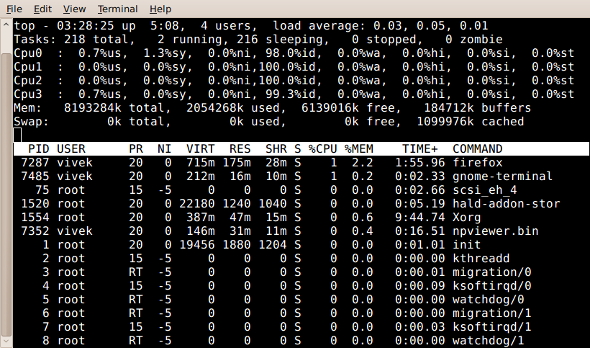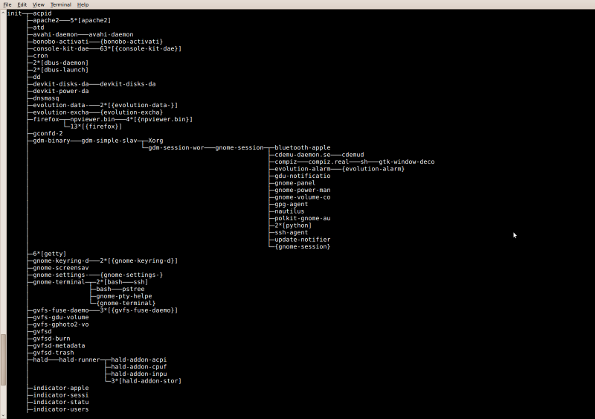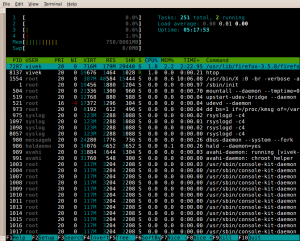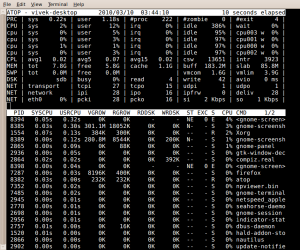You need to use the ps command. It provide information about the currently running processes, including their process identification numbers (PIDs). Both Linux and UNIX support the ps command to display information about all running process. The ps command gives a snapshot of the current processes. If you want a repetitive update of this status, use top, atop, and/or htop command as described below.
| Tutorial details | |
|---|---|
| Difficulty | Easy (rss) |
| Root privileges | Yes |
| Requirements | ps/top/htop |
| Estimated completion time | 5 minutes |
- top command : Display and update sorted information about processes.
- atop : Advanced System & Process Monitor.
- htop : Interactive process viewer.
The ps command
Type the following ps command to display all running process:# ps aux | lessWhere,
- -A: select all processes
- a: select all processes on a terminal, including those of other users
- x: select processes without controlling ttys
Task: see every process on the system
# ps -A
# ps -e
Task: See every process except those running as root
# ps -U root -u root -NTask: See process run by user vivek
# ps -u vivekTask: top command
The top program provides a dynamic real-time view of a running system. Type the top at command prompt:# topOutput:
To quit press q, for help press h.
Task: display a tree of processes
pstree shows running processes as a tree. The tree is rooted at either pid or init if pid is omitted. If a user name is specified, all process trees rooted at processes owned by that user are shown.$ pstreeSample outputs:
Task: Print a process tree using ps
# ps -ejH
# ps axjfTask: Get info about threads
Type the following command:# ps -eLf
# ps axmsTask: Get security info
Type the following command:# ps -eo euser,ruser,suser,fuser,f,comm,label
# ps axZ
# ps -eMTask: Save Process Snapshot to a file
Type the following command:# top -b -n1 > /tmp/process.logOr you can email result to yourself:
# top -b -n1 | mail -s 'Process snapshot' you@example.comTask: Lookup process
Use pgrep command. pgrep looks through the currently running processes and lists the process IDs which matches the selection criteria to screen. For example display firefox process id:$ pgrep firefoxSample outputs:
3356Following command will list the process called sshd which is owned by a user called root:
$ pgrep -u root sshdSay hello to htop and atop
htop is interactive process viewer just like top, but allows to scroll the list vertically and horizontally to see all processes and their full command lines. Tasks related to processes (killing, renicing) can be done without entering their PIDs. To install htop type command:# apt-get install htopor
# yum install htopNow type the htop command at the shell prompt:
# htopSample outputs:
atop program
The program atop is an interactive monitor to view the load on a Linux system. It shows the occupation of the most critical hardware resources (from a performance point of view) on system level, i.e. cpu, memory, disk and network. It also shows which processes are responsible for the indicated load with respect to cpu- and memory load on process level; disk- and network load is only shown per process if a kernel patch has been installed. Type the following command to start atop:# atopSample outputs:






0 comentarios:
Publicar un comentario